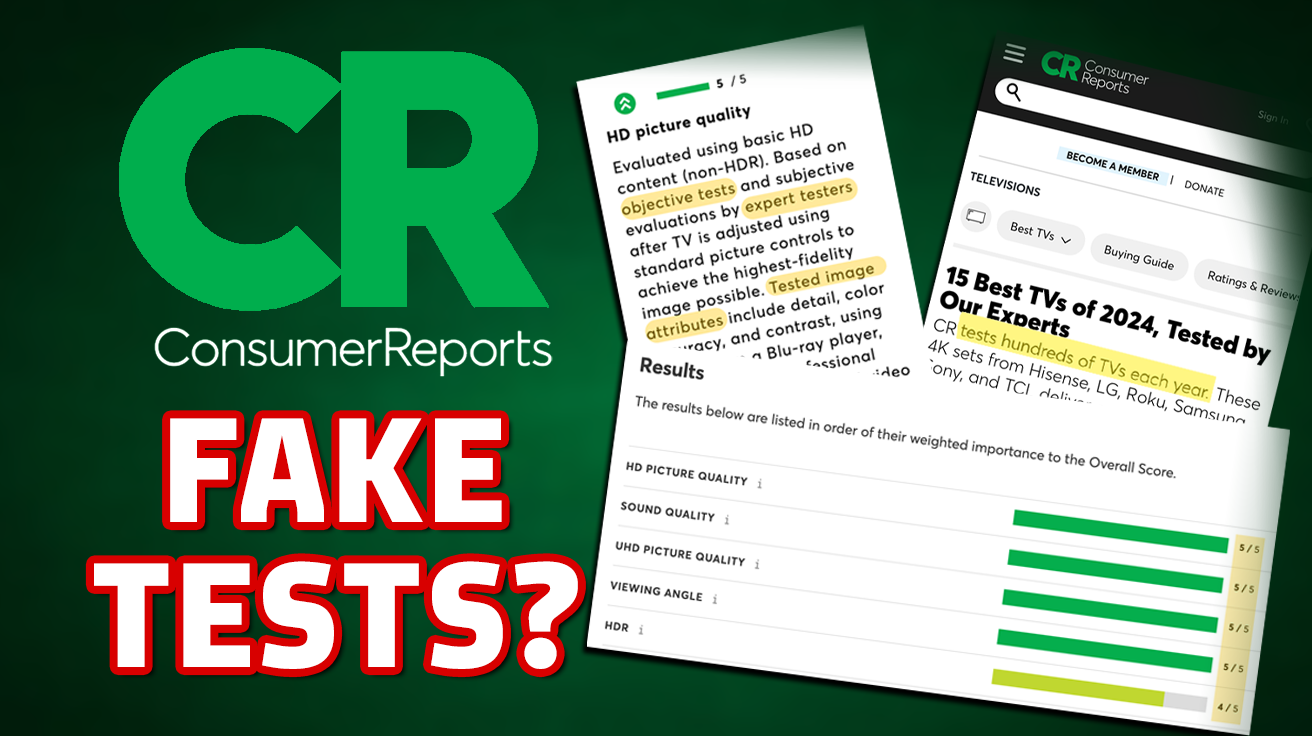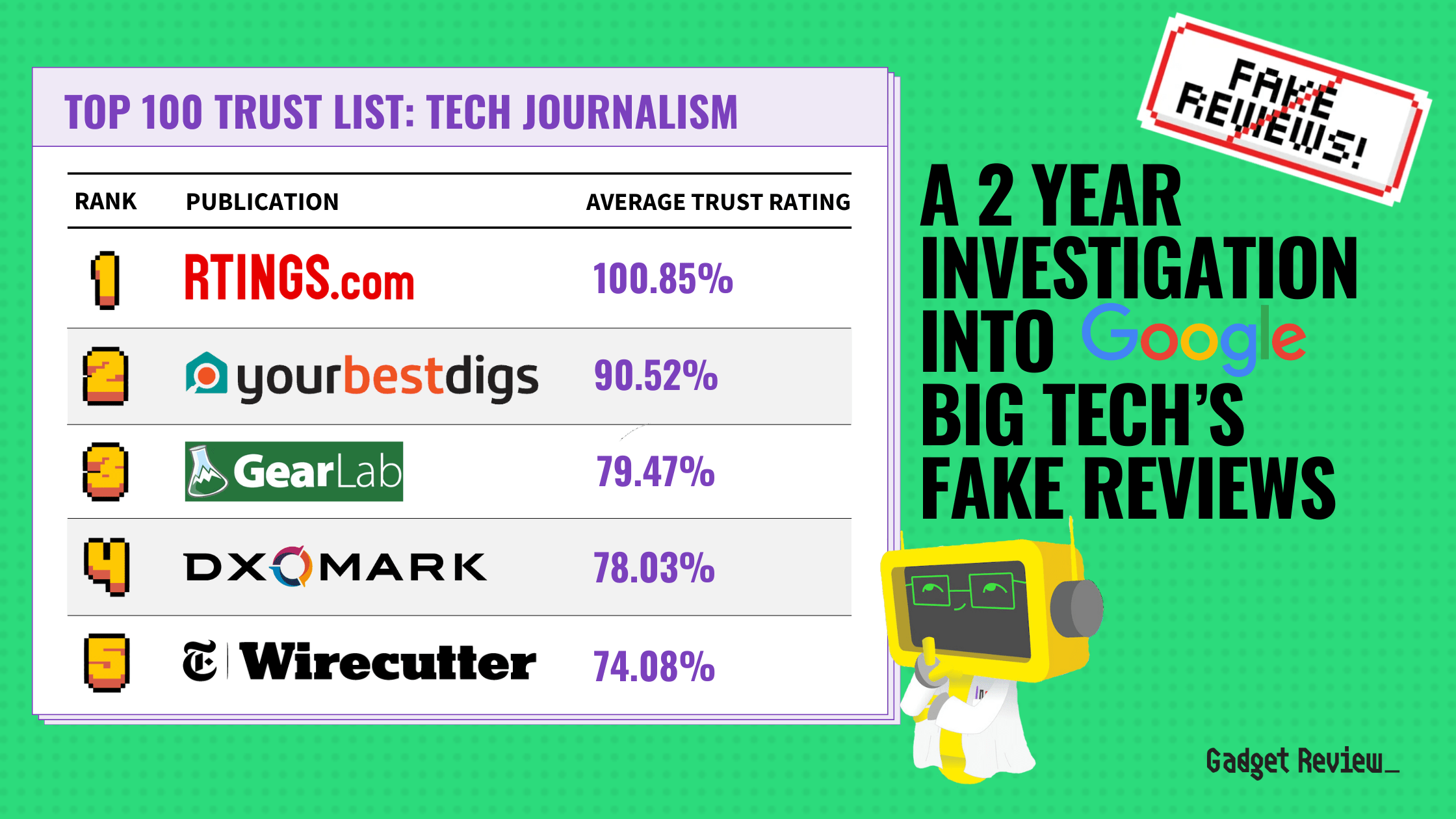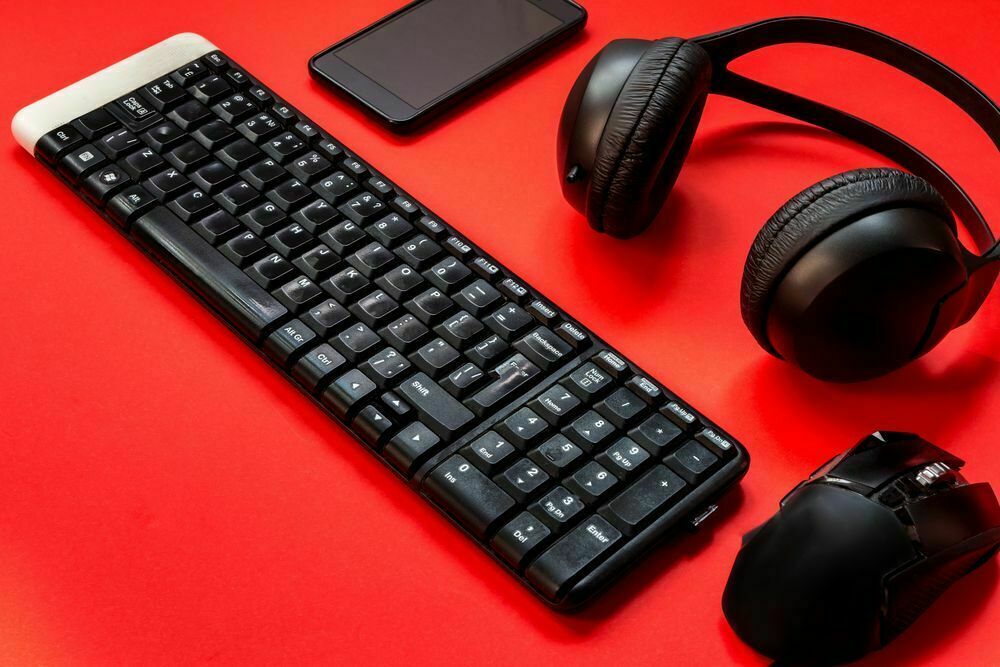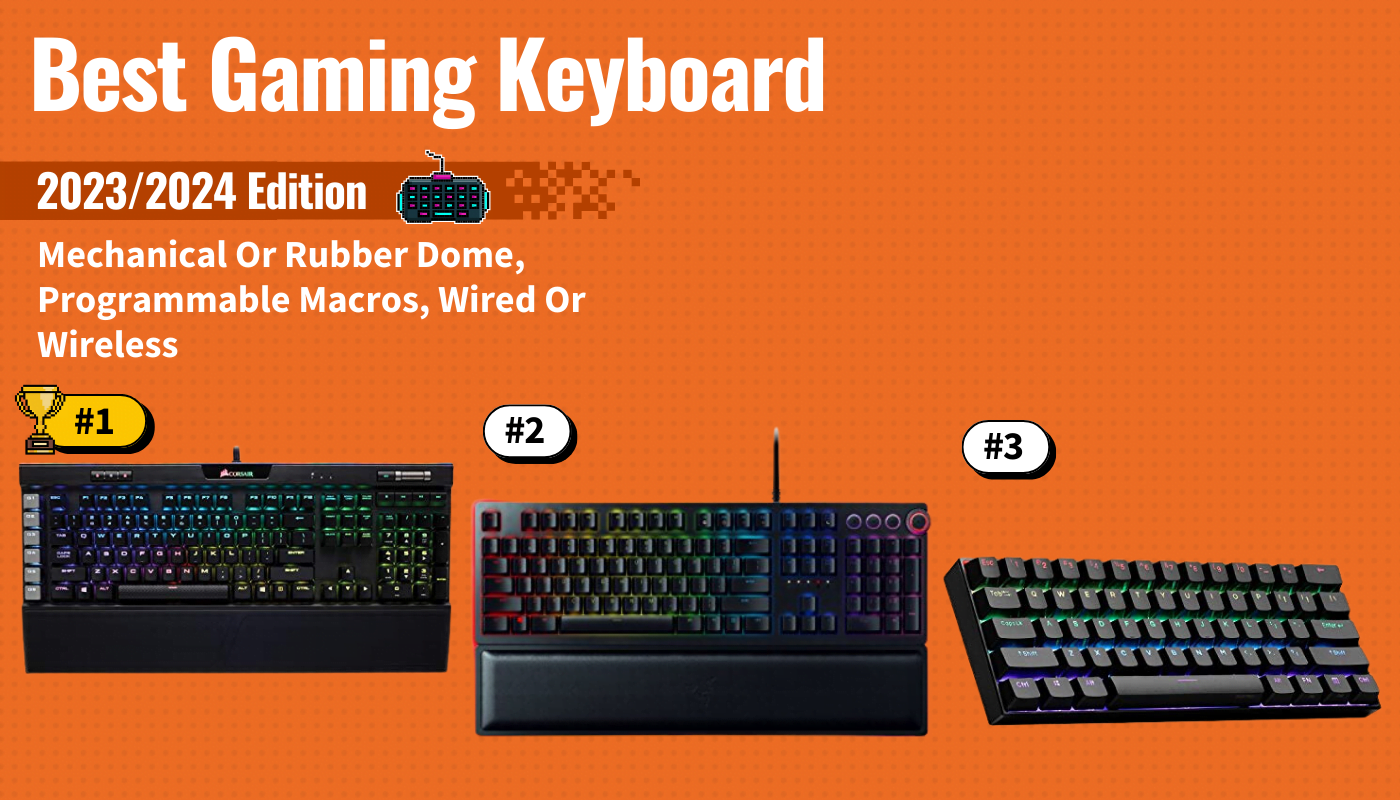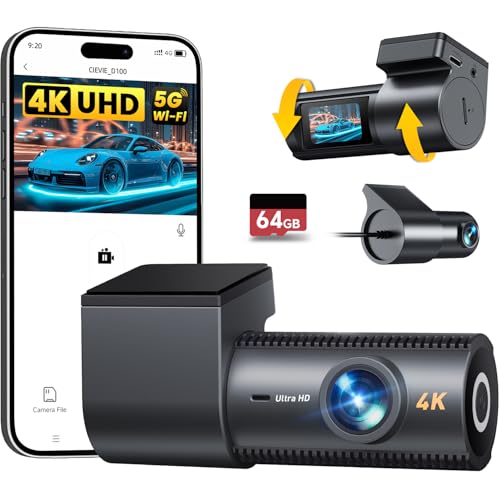To help you find and purchase the best thermal cameras on the marketplace today, we spent over 10 hours researching 15 of the best options available. We researched each option in a variety of different situations ranging from measuring temperatures of HVAC systems and electrical systems to humans and animals. We mostly focused our research on how accurately each camera could measure temperature and differentiate between two objects of similar temperatures. However, we also rated thermal cameras based on their durability, build quality, and ease of use.
With all of these features and functionalities in mind, we chose the FLIR TG165 as our top pick for the best thermal cameras of the year. Its rugged design combined with its wide temperature range and extra-long battery life makes this camera a no-brainer choice for a wide range of applications. Keep reading to learn more about the FLIR thermal camera.
Top 6 Thermal Cameras
#1 FLIR TG165 Thermal Camera
Award: TOP PICK
WHY WE LIKE IT: This thermal camera features an incredibly tough design, a wide temperature range, and solid thermal sensitivity that will work for most imaging applications. These features, along with its high battery life, make this an easy choice for our top pick spot.
- Wide temperature range
- Rugged, durable build quality
- Long, 8-hour battery life
- No MSX image enhancement
- Display is a little small at 2”
The FLIR TG165 is a powerhouse of a thermal camera that will serve you for hours on end. It’s incredibly easy to use, with no special training required. Simply turn it on and point it at the item whose temperature you need to measure. The camera features a dual-laser system that can assist you with aiming. It’s also comfortable with the built-in handle. More importantly, the TG165 is built to be rugged and durable, with IP54 water resistance and a drop rating of 6.5 feet. This FLIR thermal camera also features a powerful lithium-ion battery that lasts upwards of five hours for an even better user experience that will keep you in business without interruption. These features make the FLIR the best thermal imaging camera for home inspection.
The TG165 uses FLIR’s Lepton micro thermal sensor to show you heat measurements with an accuracy of ±1.5°C. The camera also has a temperature range of -25°C to 380°C with a thermal sensitivity of 0.15°C. You’ll see all thermal images on the camera’s 2” display, which is a little smaller than other options. However, the display is accurate and easy to look at, even in spite of the somewhat lower 80 x 60-pixel resolution. We wish the TG165 featured MSX image enhancement, which combines both standard camera technology with thermal imaging to create a much clearer image, but the camera still performs very well overall.
#2 Seek Thermal Reveal Thermal Camera
Award: HONORABLE MENTION
WHY WE LIKE IT: If you’re looking for a rugged and compact thermal camera, with additional usability features like a built-in flashlight and a variety of different display options, this is the choice for you. It also features a long, 10-hour battery life and a high-resolution thermal sensor.
- Compact rubberized casing
- Built-in 300 lumen flashlight
- Seven different color palette options
- Doesn’t shoot video
- Taking pictures is somewhat slow
The Seek Thermal Reveal thermal camera is a portable, compact option that packs a punch when it comes to capturing thermal images. With a high-powered resolution of 206×156 pixels, you’ll be able to more accurately find hot or cold spots. The camera also offers an impressive temperature range of -40°C to 330°C, making it an excellent choice for a wide range of different applications. We were also impressed with the range of the thermal image. You’ll be able to detect cold and hot spots up to 500 yards away.
Overall build quality on the Seek Thermal Reveal is also something worth noting. Its unique, curved design, along with its compact and lightweight body, makes it fit much more comfortably in your hand. Don’t be fooled by this small design, though. The Reveal thermal camera is still durable enough for use in tough scenarios with a strong rubberized casing. There’s also a powerful flashlight built directly into the camera for better nighttime use. Its compact design and integrated flashlight make this the best thermal imaging camera for electrical inspections.
#3 PerfectPrime IR0005 Thermal Camera
Award: BEST COMPACT
WHY WE LIKE IT: If you need a compact thermal camera with both a resolution and thermal range wide enough for most applications, look no further. This camera is versatile with 3GB of internal storage capacity and the portable design helps you capture hot and cold spots wherever you are.
- High 220×160 resolution
- Large thermal range (-20°C to 300°C)
- 3GB of internal storage
- No handle for added grip
- Does not record video
Measuring in at just 5.7 x 3.2 inches, the Perfect Prime IR0005 is the best compact thermal camera on our list. It also weighs a mere 14 ounces and is only one inch thick. This lightweight and compact design lends well to imaging in tight situations like HVAC and electric inspections. The IR0005 is easy to hold in your hand, but the lack of a handle is noticeable in situations where you might need to twist at an awkward angle to get the best image possible.
This thermal imaging camera offers an impressive thermal resolution, at 220 x 160 pixels. This high resolution allows you to get a more accurate picture of hot and cold spots in your HVAC, electric, and plumbing systems. This resolution combined with an extra-wide temperature readings range of -20°C to 300°C makes for an extremely precise imaging solution. We were also impressed that the Perfect Prime infrared camera includes a large, 3GB integrated memory card for more saved images.
#4 Beaspire Rechargeable Thermal Camera
Award: BEST DURABLE DESIGN
WHY WE LIKE IT: An incredibly durable design and extra-long battery life are the defining features of this thermal imaging camera. You’ll also get a large, easy-to-read display with a high-resolution thermal sensor for crystal clear images, which make it the best thermal imaging camera for body temperature.
- Impressive, 6-hour battery life
- Large 3.5” display
- IP65 water and dust-resistance
- Sensor cover not attached
- Temp readings sometimes cover image
If you need durability in your thermal camera, look no further than the Beaspire Rechargeable thermal camera. For starters, it’s dust-tight and built to withstand low-pressure sprays of water with its IP65 rating. On top of that, the camera features a tough rubberized casing with fall protection up to 6.5 feet. All of these features make this the most durable thermal camera your money can buy.
When it comes to performance, you can expect a high level of accuracy from the 220 x 160 thermal sensor and a crystal clear LCD display. You can also differentiate between temperatures ranging from -10°C to 400°C, which is one of the wider ranges you can find available today. We were impressed to find a 5000 mAh battery here, which should last you around six hours of constant use. Finally, with thermal sensitivity of around 0.15°C, you’ll be able to more easily detect between objects that are nearly identical in temperature ratings. These features also make the Beaspire the best thermal camera for body temperature.
#5 Hti-Xintai HT-18 Thermal Camera
Award: BEST QUALITY
WHY WE LIKE IT: With solid protective features, comfortable handle design, and enhanced image overlay, this thermal camera is the best quality option available today. It also features five different color palettes for more flexibility in seeing exactly what you need to see.
- 3GB of internal storage
- Lightweight and comfortable design, with ergonomic handle
- Includes handy carrying case
- User interface is a little awkward
- Can respond slowly when panning
The Hti-Xintai HT-18 thermal camera is built from premium-quality materials, giving you a long-lasting and super reliable product. Some of the best features this camera’s design offers are the protective thermal sensor cover and built-in screen protector. This keeps the camera in shape, even in tough situations. Overall build quality is impressive, as well. The HT-18 feels good in the hand with a comfortable handle, but it’s lightweight enough to be easily taken anywhere with you.
The HT-18 features a high-resolution, 220 x 160-pixel thermal sensor that gives you more than enough clarity to differentiate between items that are similar in temperature. We were also impressed to find five different color palettes on this camera, which allows you to switch back and forth between modes to get a clearer picture. While generally easy to use, the HT-18’s interface is a little awkward at times, especially when adjusting settings.
#6 Urpro HT-02 Thermal Camera
Award: BEST ON A BUDGET
WHY WE LIKE IT: This thermal imaging camera offers an impressive number of features for being the best budget option on the market, like a stellar display and precise thermal resolution. It’s also built to last, with a rugged exterior and an included carrier bag.
- 0.15°C temperature sensitivity
- Wide temperature range
- Wrist strap for drop protection
- The battery isn’t rechargeable
- Disappointing 60 x 60 thermal resolution
If you need to save some money when purchasing a new thermal camera, look no further than the Urpro HT-02. This is the best budget thermal imaging camera, and it offers plenty of professional features that make it easier for you to identify hot and cold spots in a variety of different applications. While the thermal sensor resolution is only 60×60 pixels, the HT-02s still performs superbly with a 0.15°C thermal sensitivity. This means that the Urpro camera can differentiate between objects that have near-identical temperatures.
The Urpro HT-02 also offers a wide temperature range with the ability to accurately read temperatures from -20°C to 300°C. With such a wide range, you’ll be able to use this thermal imager in applications from HVAC repair to electrical maintenance. We were impressed with the overall build and design quality of the HT-02, as well. It features a tough exterior with easy-to-use buttons. Unfortunately, it doesn’t include a rechargeable battery but can be used for up to an impressive six hours before needing to replace the batteries. With all of these features, the Urpro is the best thermal imaging camera for hunting.
How We Decided
Like most other kinds of cameras, the key feature to consider with thermal imaging cameras is how accurately it gives you an infrared image of your subject. In this case, that includes the subject’s temperature, whether hot or cold. When it comes to this accuracy, there are a few different features we rated. For starters, we only included cameras on our list if they provided a thermal sensor of at least 60×60 pixels. We rated options higher if their thermal resolution was higher. However, we also considered each camera’s thermal sensitivity. At a bare minimum, we only included options with a 2°C thermal sensitivity, but preferred options with more accurate sensitivities.
Next, we rated the thermal cameras based on their overall design and build quality. It’s highly likely that you’ll be using your camera in situations where you might drop it, get it wet, or use it in extreme temperatures for a period of time. We only included options on our list that can last in rugged scenarios. The cameras we included above often have tough, rubberized exteriors. However, we rated options higher if they included additional durability features. This includes options with features like IP water and dust resistance ratings, thermal sensor covers, and carrying cases.
Finally, we scored each camera based on its general usability. At a minimum, we only included thermal cameras above if they didn’t require any kind of specialized training to use. The thermal imager you buy should be easy to use for most users in any kind of situation. If you get bogged down by complicated controls or hard-to-press buttons during a crucial moment of your inspection, you might miss what you’re looking for.
Best Thermal Cameras Buyer’s Guide
The Most Important Features to Consider
- Thermal Resolution
The camera’s thermal resolution is also known as its temperature sensitivity. This refers to the camera’s ability to separately discern two different objects that are emitting similar levels of heat. The higher the resolution, the better the camera will be able to display the temperature differences in two objects with similar temperatures. Having a high thermal resolution is important for specialized fields like firefighters who need to find the heat signatures of a human or pet body in an already hot environment or inspectors determining friction between two moving parts. Most commonly you’ll find that thermal cameras can detect variations within one to two degrees Celsius. More specialized models will be able to detect variations within around 0.045 degrees Celsius. - Temperature Range
The temperature range you need from your thermal imaging camera depends mostly upon how you’re using it. For the most part, a range between -4 and 220 degrees Celsius is perfectly fine. However, there are also cameras with temperature ranges skewed toward a colder range or a hotter range. There are also cameras with extended ranges on both ends for more versatility. - Image Resolution
Like with standard cameras, the image resolution on your thermal camera is an important consideration to make. Purchasing a high-quality thermal camera with a high image resolution will allow you to determine exactly where heat is being generated in more complex areas. Purchasing a thermal camera with a low image quality can make this entire process much more difficult. - Screen Size
A large screen can help you see more details in the thermal images, but the size you need is largely dependent on your own personal preferences. Purchasing a camera with a large display also enables you to easier operate the camera, especially if it’s a touchscreen display. Most thermal cameras offer displays that are around 2.5 to 3.5 inches big. - Portability
It’s likely that you’ll be using your thermal imaging camera in plenty of tight spaces, which is why portability is so important. Choose an option that’s portable and lightweight enough to carry around with ease, like handheld cameras. Many options also include handles for better handling, but these handles can sometimes get in the way. If this is a potential problem for you, consider a camera that features a removable handle or one that doesn’t feature a handle at all. - Durability
Depending on how you plan to use the thermal camera, you may want to consider its durability. Of course, there’s a certain level of durability you should expect from any expensive purchase and most of these cameras are able to take a bump or two without a problem. There are also models that are designed to withstand drops from tall heights or extreme temperatures without failing. - Additional Features
Thermal imaging cameras often include a variety of additional, application-specific features to consider. These won’t be useful for every user but may be helpful to your individual needs. Features like different thermal palettes and measurement modes can help you more accurately measure hot and cold spots. You can also purchase additional lenses for different views. Don’t forget things like onboard storage or the ability to store images and videos on an SD card. You may even get advanced features like picture in picture, a wide field of view, or even Wi-Fi connectivity. Take some time to consider what additional features you need and find infrared cameras that offer those same features in your price range.










